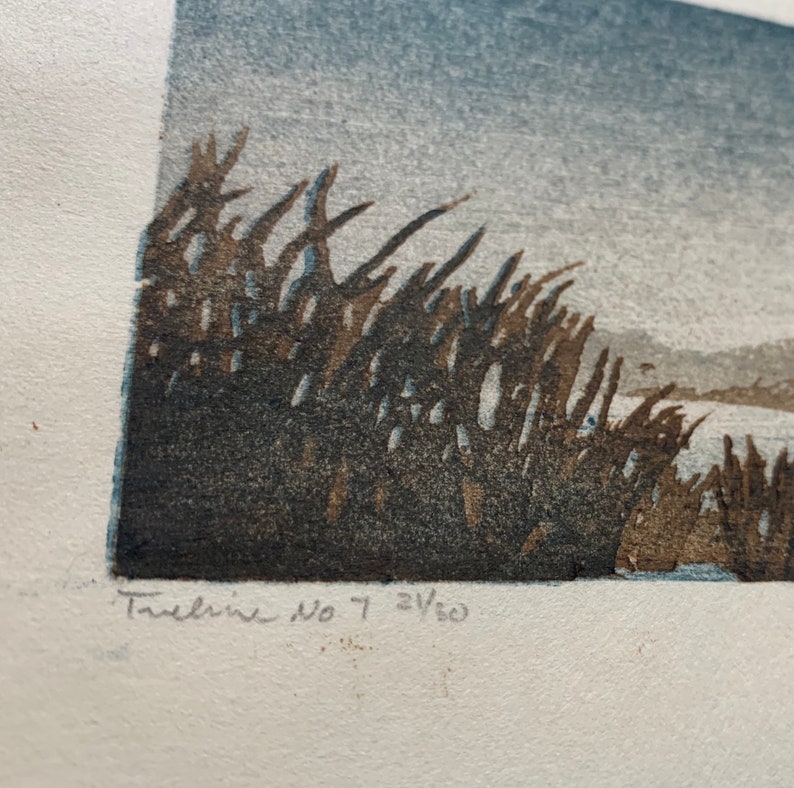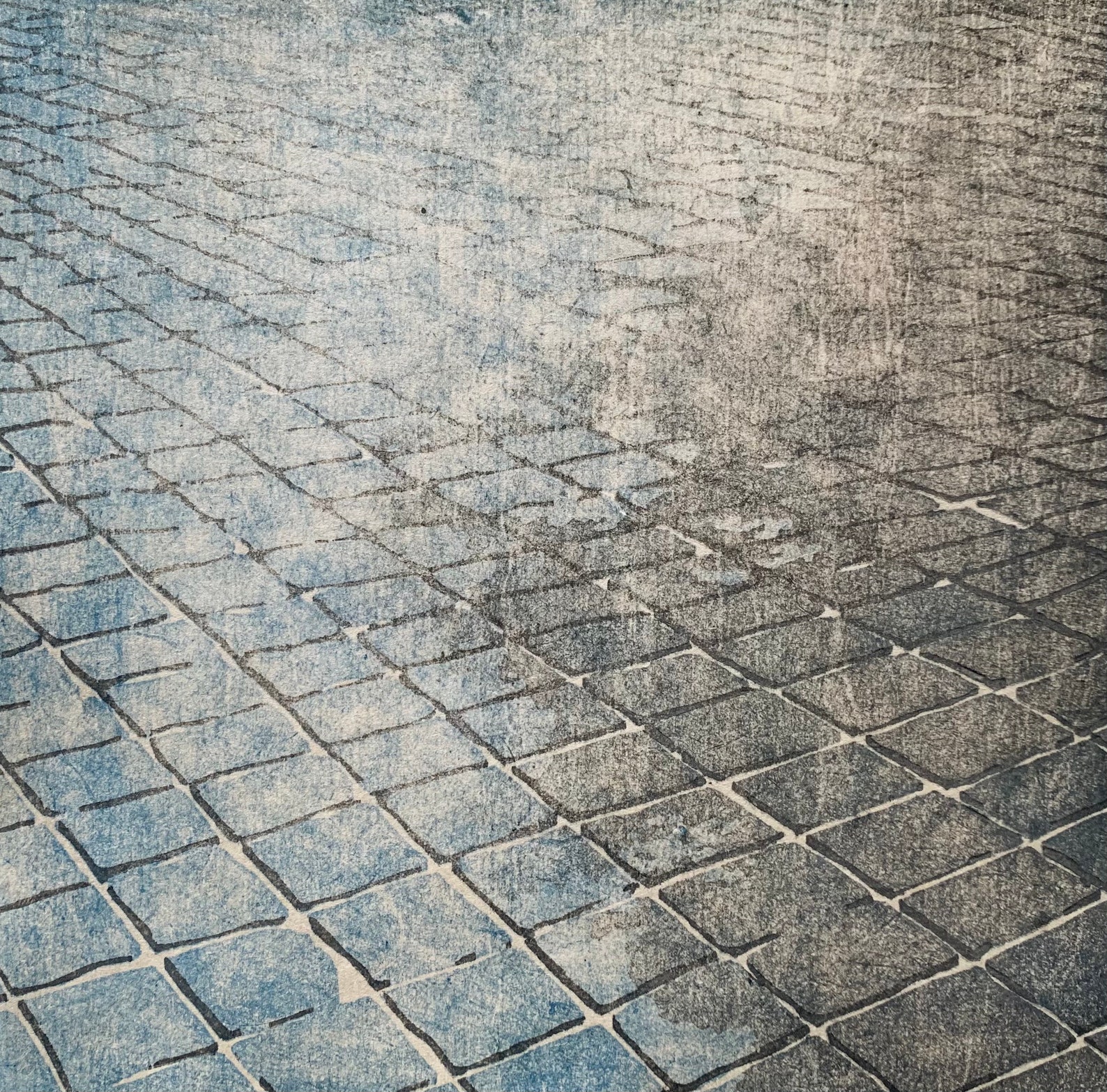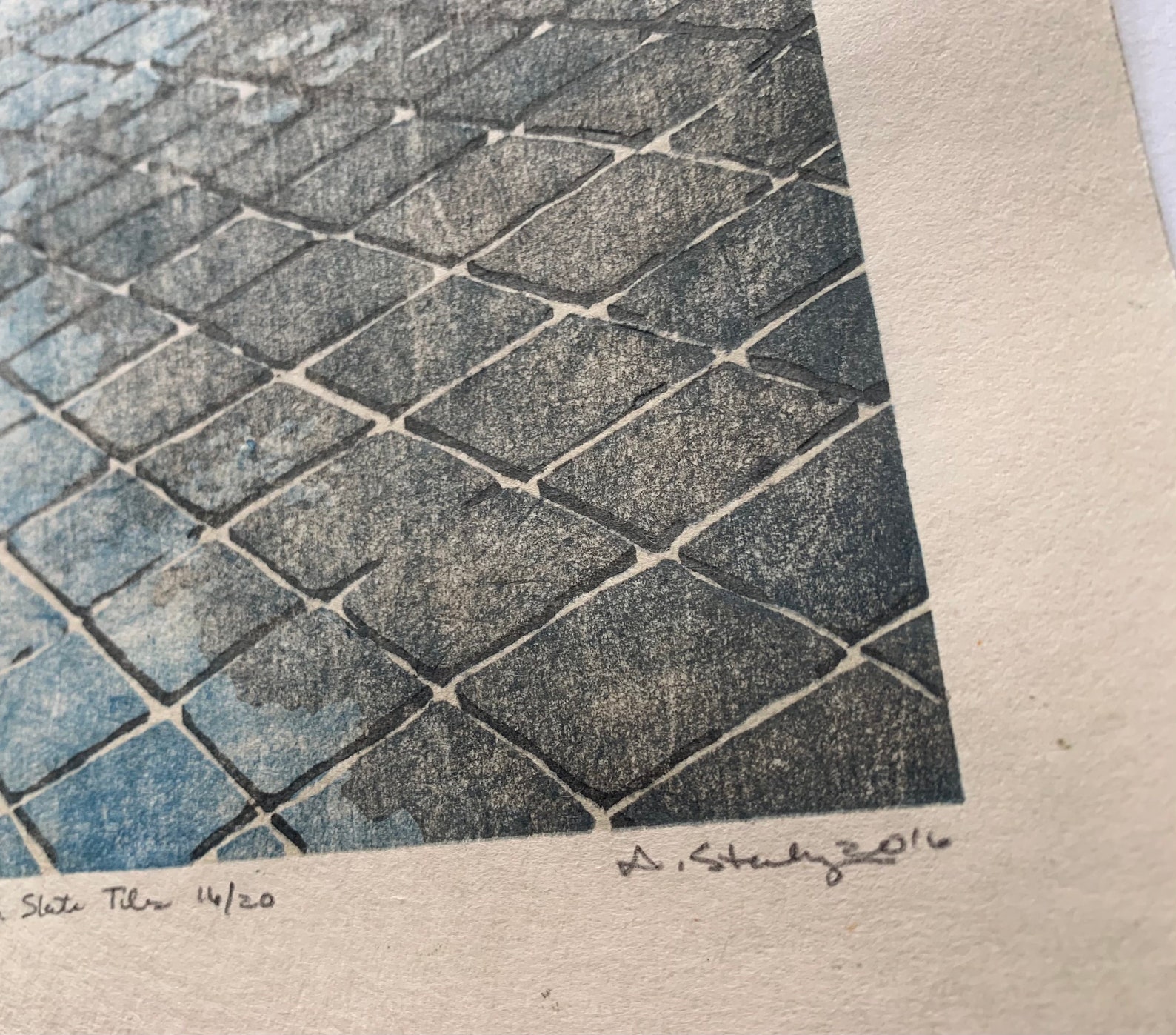

#Moku hanga reduction print registration
View the registration page and enroll now. $100 Kettering residents/$110 nonresidents. The workshop takes place on Saturday and Sunday, March 3 and 4 from 10am – 5pm both days. Participants will bring home proofs, prints and blocks. I liken the results to watercolor as opposed to western techniques which are more like oil painting. The Print Booked exhibition at the conference included an amazing variety of. The first day will consist of carving a design and transferring it to a second block, while the second day will be centered on pulling prints and making additional color blocks. Japanese-style Woodblock Printing (moku-hanga)Basics John Amoss / Traditional eastern printmaking techniques use water-based relief processes using woodblocks as matrices and a printing pad as a means of pressure. Breathing In, 2004, mokuhanga and silkscreen on washi, 21.5 x 21.5 inches. I leave it between wet newsprint for some hours. Before printing, the japanese washi-paper has to be moistened. I mix the pigment with some water and alcohol and put them in a jar. Plan ahead and don’t rush just because you’re excited about a new method. I like to think that I learned many things after doing this print technique, such as. I managed to print 8 shades of gray before I ran out of wood. Now it´s time to decide about the colours. The completed moku hanga reduction print. The main takeaways from the workshop will be the registration system and working with the inks, which can be applied to multiple printmaking processes that can be done without a press. Surely the final print will not look like this. I would say the workshop is appropriate for all levels, and some carving experience is helpful but not necessary. Here are some details about the workshop: There are quite a few Japanese printmakers that I’m in awe of, as well as a group of North American illustrators-turned-printmakers around the 1920s that practiced tradition Japanese methods. Japanese Woodblock Print Workshop: A Modern Guide to the Ancient Art of Mokuhanga - Kindle edition by Vollmer, April. About ten years ago, I started printmaking and was immediately hooked on it, and studied everything I could about the Moku Hanga process. I am an architectural illustrator and graphic designer professionally. There’s something meditative about the steps of drawing the image and then carving it, and I find the natural materials and tools used in the printmaking a joy to work with.Ĭan you give some details about your background as an artist? I find trees very inspiring, and especially light through branches.

It’s been an invaluable source of information on the technique. I joined an online group of international Moku Hanga printmakers (Baren Forum) and participated in their print exchanges. Endlessly surprising, Takuji Hamanakas carefully. Research led me to the Japanese woodblock method. He has developed his own approach to reduction printing to create mathematically precise, jewel-like prints. When I started printmaking, I knew I wanted a light and transparent effect rather than solid areas of color, and I wanted a way to make prints without a press. How did you become interested in Moku Hanga?

The registration system for making multi-color prints is simple and elegant, and the technique in general can be applied to other forms of printmaking like monotypes/monoprints and reduction prints. Instead of oil-based ink rolled on the printing block, water-based inks or pigments are brushed on the block, allowing for gradations and transparent watercolor-like effects. Prints are pulled by hand using a disc-shaped tool called a baren rather than using a printing press. Moku Hanga, or traditional Japanese woodblock printmaking, is basically a difference in Eastern vs. How does Moku Hanga differ from other types of printmaking? We caught up with her to learn more about the art of Moku Hanga, what inspires her, and what you can expect to learn during the workshop. For my prints so far, I have experimented with variations of traditional pigments, gouache and roller-based inks typically used in European woodcut printing.Dayton-based artist Andrea Benedict-Starkey will be at Rosewood Arts Centre on March 3 and 4 to teach a master class in the Japanese woodblock printmaking technique, Moku Hanga. Moistened paper is then laid over the block and the pigment is transferred by applying pressure by hand using a small disc called a baren. Traditionally, the printing process uses a mixture of nori paste, water and liquid pigment which is brushed onto each block. Mokuhanga is a modern evolution of Ukiyo-e: the Japanese art of using small hand-chisels to carve away at a block of sidegrain wood. I initially received training from Adrian Holmes, and have since researched the history and techniques of the artform further. In 2019 I made a commitment to develop my skills as a Mokuhanga printmaker.


 0 kommentar(er)
0 kommentar(er)
